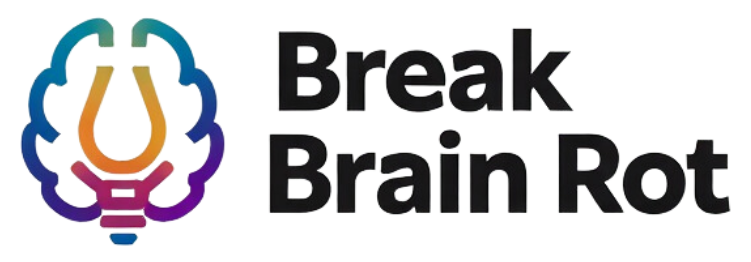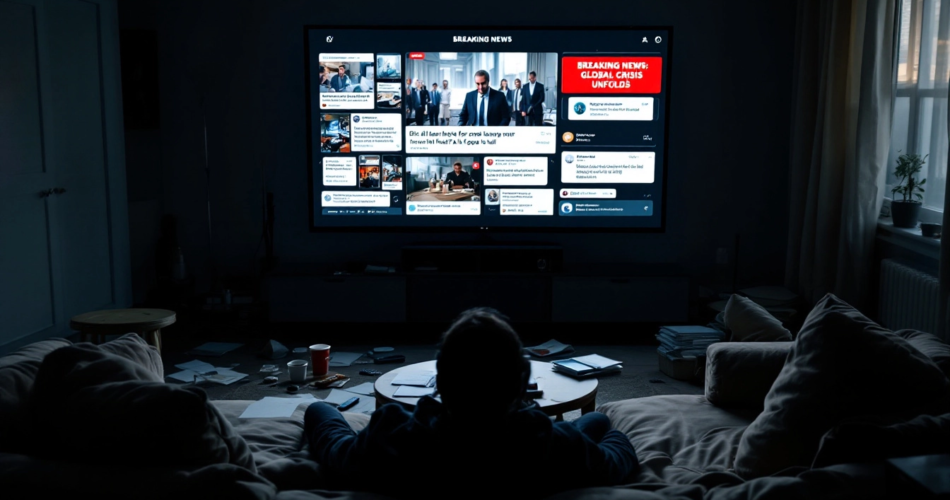Did you know that 74% of individuals admit to spending hours scrolling through negative news during moments of crisis? This phenomenon, known as doomscrolling, has become increasingly prevalent in our hyper-connected world, where smartphones and social media dominate our lives. But why do people doomscroll, and what makes it so captivating yet detrimental? The answer lies in the dark underpinnings of psychology, fueled by a mix of human tendencies, algorithms, and societal pressures. In this article, we’ll dive deep into the reasons behind doomscrolling, its impacts on mental health, and steps you can take to break free from this harmful habit.
Table of Contents
- What Is Doomscrolling and Why Is It So Addictive?
- The Psychological Triggers Behind Doomscrolling
- How Doomscrolling Impacts Mental Health
- Why Do People Doomscroll During Crisis Events?
- Strategies to Break Free from Doomscrolling
- FAQs
- Conclusion
What Is Doomscrolling and Why Is It So Addictive?
Defining Doomscrolling
Doomscrolling refers to the compulsive act of endlessly scrolling through negative news and content, often at the expense of mental well-being. This behavior has grown alongside the rise of smartphones, where access to 24/7 news and social media is just a swipe away. Platforms like Twitter and Facebook have created spaces where bad news spreads rapidly, locking users into cycles of fear and anxiety.
The Role of Algorithms
Social media algorithms are designed to prioritize content that keeps users engaged, often amplifying negative or sensational news. This ensures that anger, fear, or shock dominate your feed, making it difficult to look away. Research indicates that this is not by accident—negative content elicits stronger emotional reactions, which algorithms exploit to maximize time spent online.
Escapism or Engagement?
While some people doomscroll to stay “informed,” others might be unconsciously using it as a form of escapism. By focusing on external chaos, individuals may avoid addressing personal issues. Regardless of the motive, one thing is clear: the more you scroll, the harder it becomes to stop.
The Psychological Triggers Behind Doomscrolling
The Fear of Missing Out (FOMO)
FOMO often drives individuals to stay connected, even when the content is distressing. People fear that by stepping away, they may miss important updates or be left out of critical conversations. This push to stay informed creates a relentless pull to scroll further.
The Negativity Bias
Humans are inherently wired to pay more attention to negative information. This evolutionary trait, known as negativity bias, was essential for survival in the past but now propels our attraction to alarming headlines and bad news. Unfortunately, this bias means that positive or neutral content often takes a backseat in our media consumption.
Anxiety Amplifying Behavior
Research shows that doomscrolling doesn’t just stem from anxiety—it amplifies it. As people digest one negative story after another, their stress levels increase, creating a vicious cycle where more negativity is sought to alleviate the original anxiety.
How Doomscrolling Impacts Mental Health
Increased Levels of Stress and Anxiety
Studies have linked doomscrolling to heightened levels of stress and anxiety, leaving individuals feeling overwhelmed and helpless. Prolonged exposure to distressing content can exacerbate pre-existing mental health conditions, creating a cascade of psychological strain.
Disrupted Sleep Patterns
Scrolling through distressing news before bed can wreak havoc on your sleep. The blue light from screens and the psychological impact of negative content combine to reduce the quality and duration of restorative rest, leaving individuals depleted the next day.
The Long-term Effects on Cognitive Health
Extended exposure to negativity can impair cognitive functions, including attention span and emotional regulation. Over time, the brain becomes accustomed to prioritizing negative stimuli, making it increasingly difficult to focus on positive aspects of life.
Why Do People Doomscroll During Crisis Events?
The Desire for Information During Uncertainty
During crises such as pandemics, natural disasters, or political upheaval, people often doomscroll to make sense of unfolding events. The uncertainty of these situations drives an insatiable need for information, even when it provides little reassurance.
The Role of Collective Trauma
In times of shared global or national distress, collective trauma can amplify the habit of doomscrolling. People often turn to social media for solidarity, but instead, they find an overwhelming amount of negativity, which perpetuates the cycle.
Misinformation and the Search for Truth
The spread of misinformation during crises only intensifies doomscrolling. The endless quest to separate fact from fiction keeps users hooked and more vulnerable to emotional exhaustion.
Strategies to Break Free From Doomscrolling
Set Screen Time Limits
One of the simplest ways to curb doomscrolling is by setting time restrictions for screen use. Use features like app timers or phone settings to limit the hours spent on social media and news apps.
Curate Your Content
Take control of your digital environment by following accounts that promote positivity and unfollowing sources of distress. Focus on curating a feed that enriches your mind rather than overwhelming it.
Practice Mindfulness and Stress Management
Incorporating mindfulness techniques, such as meditation or breathing exercises, can help manage the urge to doomscroll. Apps like Calm or Headspace offer accessible ways to bring more intentionality into your day.
FAQs
What is doomscrolling, and why do people engage in it?
Doomscrolling is the compulsive consumption of negative news, driven by factors like anxiety, curiosity, and the desire to stay informed.
How does doomscrolling affect mental health?
It can increase stress and anxiety levels, disrupt sleep, and negatively impact cognitive health over time.
Can doomscrolling be stopped or controlled?
Yes, by implementing strategies such as setting screen limits, curating content, and practicing mindfulness.
Why is doomscrolling so addictive?
The combination of negativity bias, FOMO, and algorithm-driven content creates a powerful psychological pull.
What role do crises play in doomscrolling behavior?
Crises amplify doomscrolling due to collective trauma, misinformation, and the need for information during uncertain times.
Conclusion
Doomscrolling is more than just a habit; it’s a reflection of complex psychological and societal factors. By understanding why people doomscroll and recognizing its effects on mental health, you can take intentional steps to break free from the addiction. Whether through setting boundaries, curating your digital space, or practicing mindfulness, reclaiming control over your media consumption is possible. Take the first step today and transform your relationship with technology into one that supports your well-being.

